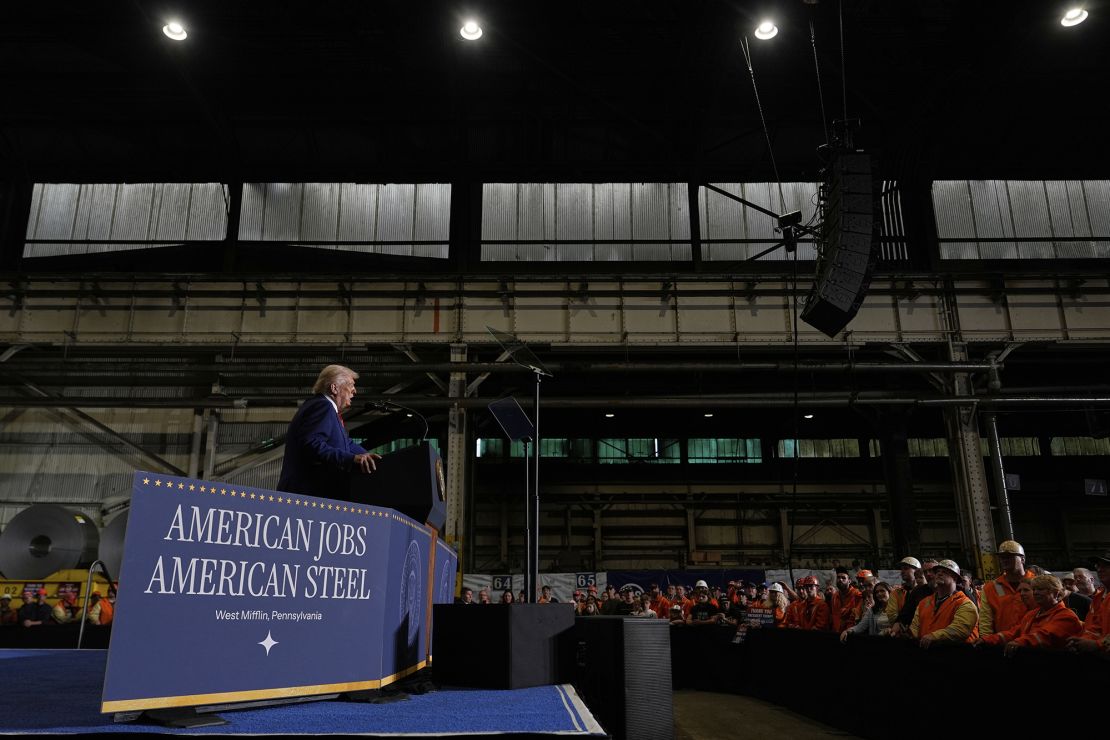Articles in this Cluster
04-06-2025
The US tariffs on steel and aluminum imports have been doubled to 50% by the Trump administration, a move welcomed by the US steel industry but worrying sectors that heavily rely on these metals. The increased tariffs are part of Trump's trade war and are intended to protect national security and the economy. However, experts warn that higher prices on construction projects, cars, appliances, and other goods are likely, and that the tariffs could hurt employment in larger industries that use steel and aluminum. The tariffs may protect steel manufacturing jobs but could cost jobs in industries like car manufacturing and can production. The Aluminum Association and Can Manufacturers Institute have expressed concerns that the tariffs will increase costs and potentially lead to job losses. Some experts estimate that for every steel job saved, 75 jobs are lost elsewhere in manufacturing due to higher input costs.
04-06-2025
US President Donald Trump has signed an order doubling tariffs on steel and aluminium imports from 25% to 50%, aiming to secure the American steel industry's future. The move is expected to harm steel producers outside the US, spark retaliation from trade partners, and increase costs for American users of the metals. The UK has been granted a carve-out from the measures, maintaining its 25% tariffs. Critics, including economists, warn that the tariffs will lead to job losses and damage the US economy. Trump's decision has already prompted Canada and the EU to prepare retaliatory measures, and UK steelmakers fear "catastrophic" consequences for their exports to the US.
04-06-2025
US tariffs on steel and aluminum imports have doubled to 50% from 25%, effective immediately, as part of President Trump's efforts to revitalize American steel mills and aluminum smelters, citing national security concerns. The move has been met with criticism from close allies, including Canada and Europe, as well as companies that rely on buying metals, such as automakers and plane manufacturers. The steel and aluminum industries have praised the tariffs, saying they will help prevent surges in imports that could injure American producers. However, economists have warned that the tariffs could slow US manufacturing and raise prices for consumers. The tariffs are the latest in a series of import taxes announced by Trump since returning to office, and have increased concerns of a global downturn. Canada is the largest foreign supplier of both steel and aluminum to the US, and the tariffs are expected to have significant impacts on Canadian producers.
04-06-2025
President Trump's tariffs and push to bring manufacturing back to the US are met with skepticism from business leaders, who cite a lack of infrastructure, workers, and training. Sanjeev Bahl, CEO of Saitex, has a factory in LA that produces 70,000 pairs of jeans a month, but relies on a larger factory in Vietnam for 500,000 pairs a month. Bahl believes the US can make more, but faces challenges like high labor costs, a shortage of 500,000 manufacturing workers, and a lack of suppliers for zippers and buttons. The US would need to hire 22 million people to return manufacturing to 1970s levels. Trump's immigration policies have exacerbated the labor shortage, and companies like Saitex are limited by the high cost of labor in the US compared to countries like Vietnam.
